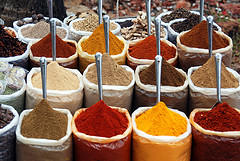Though many people count calories to try to lose weight, monitoring your sodium intake is another important consideration. Consuming too much sodium can also put you at risk for cardiovascular disease and hypertension, so limiting your intake will keep you healthy in more ways than one. If you want to begin a low-sodium diet and take control of your health, these tips can help.
- You don’t need to cut out sodium completely, just limit your intake. A good number to go by is 2,000 mg per day.
- Foods can still be high in sodium even if they don’t taste salty. Learn to read the labels on your food to make sure you know how much sodium it contains.
- If you find it challenging to monitor your sodium intake, start a food journal. List the foods you consume at each meal or snack, and record the sodium content in each one.
- Many seemingly healthy foods contain too much sodium. Try to purchase whole, raw produce instead of canned vegetables, as the canned versions are often packed in a liquid containing sodium. Also use fresh poultry or meats instead of canned or processed versions.
- Choose herbs, spices, and salt-free seasoning blends to add flavor without adding sodium.
- Read the labels of your canned or frozen foods. Many brands offer low-sodium or reduced-sodium versions of foods you already eat.
Reduce Salt and Sodium in Your Diet [NIH]
Low Sodium Diet Guidelines [Cleveland Clinic]

 Equal Housing Opportunity
Equal Housing Opportunity